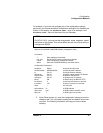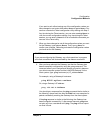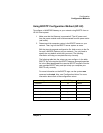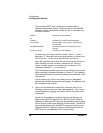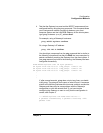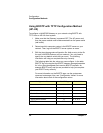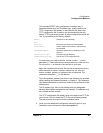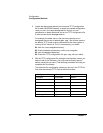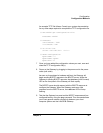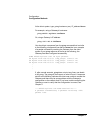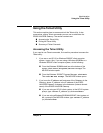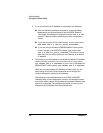
Chapter 3 59
Configuration
Configuration Methods
This example BOOTP entry configures a hostname (hn), a
hardware address (ha), an IP address (ip), and the path to the
TFTP configuration file (T144). In this example, the path to the
TFTP configuration file is relative, with the assumption that the
default TFTP mode is being used. All other configuration values are
“set” to (will default to) the factory defaults.
For each entry you make to the file, include a colon (“:”) and a
backslash (“\”) after each field to continue the entry on the next line.
Do not put the :\ at the end of the last field in your entry.
Begin the hostname with a letter. Do not start a hostname with any
other character, such as a number, underscore, etc. Use only
letters, numbers, periods, or hyphens within a hostname. The
underscore character (“_”) is not allowed.
The LAN hardware address (ha) value is the address you recorded
while installing the Gateway hardware in Chapter 2. The Gateway’s
LAN hardware address is printed on a label on the underside of the
Gateway box.
The IP address (ip) value is the address that your designated
Network Administrator assigned for the Gateway. The address must
be in dotted decimal notation.
The TFTP configuration file (T144) value is the path to the TFTP file
you will use. (You will create the TFTP file in the following steps.)
The path must be enclosed in double quotation marks.
4 Once you have added the configuration values for each of your
Gateways, save and close the /etc/bootptab file.
E2050:\ Hostname for this Gateway
hn:\
ht=ether:\ Hardware type, which should be ether
vm=rfc1048:\ Vendor magic cookie selector, which should
be rfc1048
ha=0800091A0E00:\ Hardware address for the Gateway’s LAN
interface
ip=156.140.4.249:\ IP address for the Gateway
T144=”E2050/gw1.cfg” Path to the TFTP configuration file



